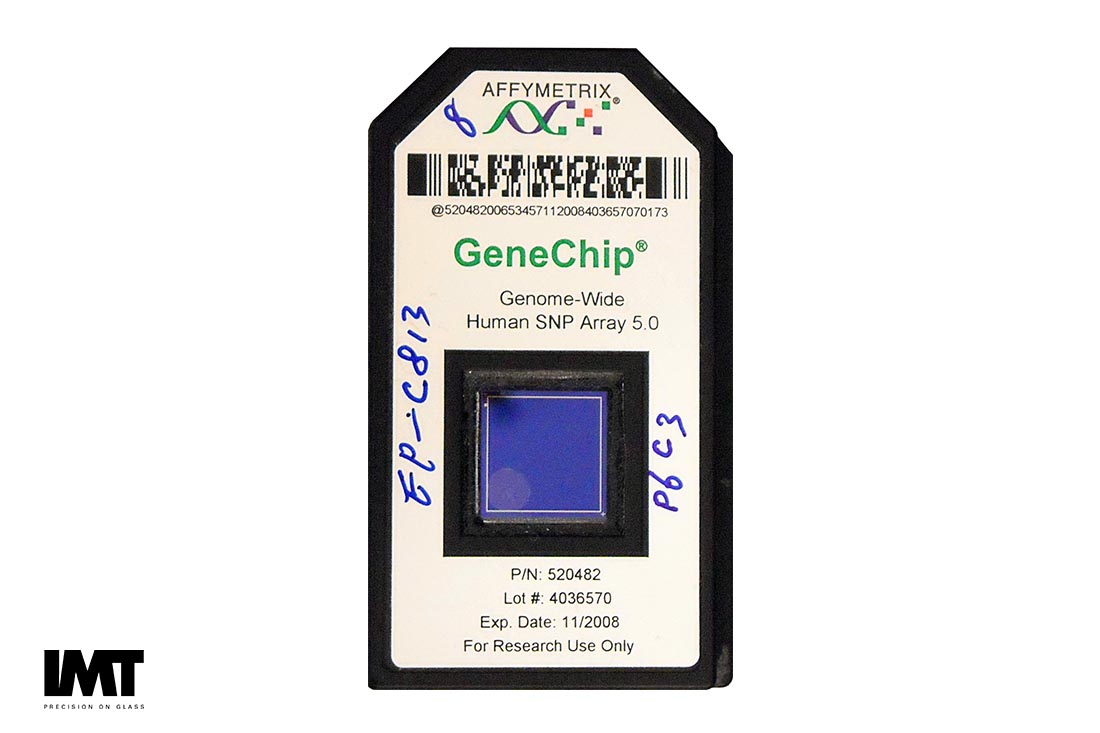Microfluidics Inside – Device Integration

N.B. The microstructures are inside; the cartridge is what the world sees. Genechip Image by: Ricardipus
One important perspective to keep in mind – the IVD product will not be the IVD device. Device integration is an often overlooked step in developing and manufacturing any biodiagnostic device or consumable. It is unlikely a person or machine will ever see the microfluidic chip inside. Most IVDs are a product, and what is seen is the cartridge, not the device. Thus, there is a final element to consider – the interface between the microfluidic device, which is a component, and its packaging.
Most IVDs are a product, and what is seen is the package, not the device. Thus, there is a final element to consider – the interface between the microfluidic device, which is a component, and its packaging. The interface between device and its package is decided on a company-by-company and product-by-product basis. Here pick-and-place technologies and other integration processes can facilitate scalable production of complete flow cells, including packaging and sterilization.
IMT, along with other companies engaged in manufacturing microfluidic devices and products from across the supply chain are trying to facilitate the microfluidics market growth by addressing standardization issues.
The aim of this standardization process is to hasten the adoption of microfluidics solutions by simplifying the integration of microfluidic components and systems and pushing towards lower costs, shorter time-to-market, and reusability in multiple applications. Our approach is to define industry-wide supported guidelines and standards that will enable reliable microfluidic interconnections and affordable integration.
Adoption of these guidelines are supported by the development of application specific verification tests to guarantee usability. As a result, a new ISO working group was initiated and an industry association is in the making: the MicroFluidic Association (MFA) with – so far – partners from Europe and the USA. The aim of this association is to facilitate the uptake of microfluidics by simplifying the integration of microfluidic components and systems and pushing towards lower costs, shorter time to market, and reusability in multiple applications.
More specifically the organization intends to define industry-wide supported guidelines and standards that will enable reliable microfluidic interconnections and affordable integration, supported by standardized generic validation tests to guarantee fitness for use. A primary focus is to generate a generic common terminology and definitions relevant to microfluidic components, describe those and provided testing is required to specify test conditions, reliability models and standard test equipment.
The measurement protocols will be set up following a generic methodology of accurate measurement of a quantity by utilizing standardized methods and reference documents, e.g. VIM & GUM 4 and cross-referenced to existing ISO Norms or defined within the new ISO Norm ISO/AWI 22916. Over 75 interested parties from 19 countries are now involved in the discussions.
The standardization discussion, which started a few years ago about the microfluidic chip connections, has now expanded towards microfluidic building block dimensions, along with verification testing. The goal is to define objective testing standards for quality control and instrument/component comparisons.
Stay tuned to Tech Updates for more as our industry develops the standardization guidelines necessary to support innovation for life sciences applications. More background information can be found under: www.makefluidics.com/en/design-guidelines
Works Cited
[1] NIST, "http://mf-manufacturing.eu/nist-workshopon- standards-for-microfluidics-2017/.," [Online].
[2] "https://www.iso.org/standard/70603.html," [Online].
[3] "http://www.enablingmnt.co.uk/wp-content/uploads/2016/07/Design-for-Microfluidic-Interfacing-White-Paper-part-2-version-1.1.pdf," [Online].

